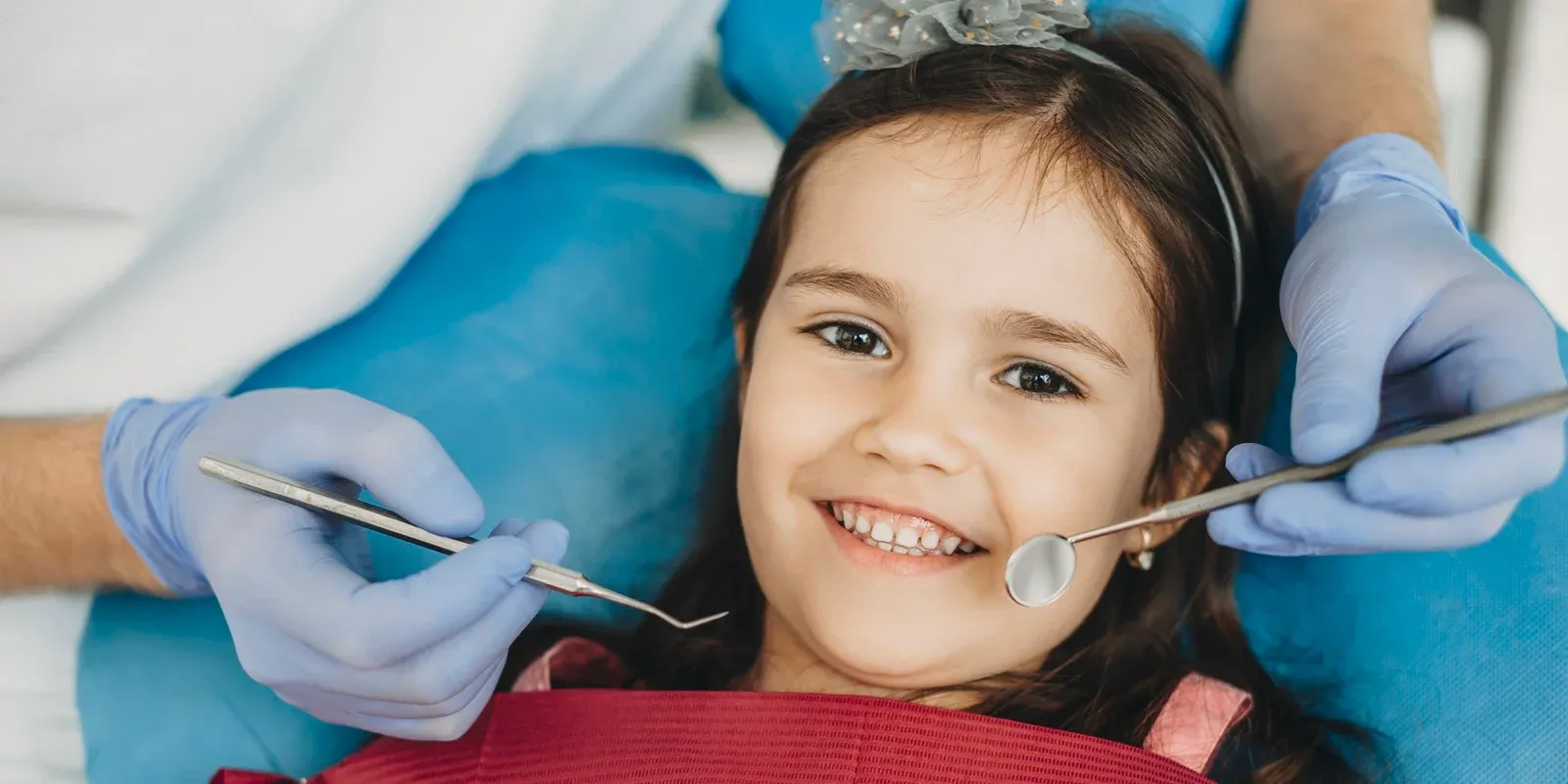HEALTH
Low Fat Cheese: A Healthy Alternative to Full-Fat Cheese

Cheese lovers rejoice! If you’ve been on a quest to find a healthier way to enjoy your favorite dairy delicacy without the guilt, you’re in the right place. The world of cheese is vast and delicious, but with all its indulgent goodness comes a hefty dose of fat and calories. Enter low fat cheese, a lighter alternative that’s making waves in kitchens everywhere.
This blog post will take you on a cheesy adventure, exploring the benefits of low fat cheese, how it stands up against its full-fat counterpart, and why it might just be the perfect addition to your diet. Whether you’re a connoisseur or a casual snacker, understanding the ins and outs of low fat cheese could change the way you view your favorite food.
What is Low Fat Cheese?
Low fat cheese is exactly what it sounds like—a cheese with reduced fat content compared to traditional full-fat versions. But how does the magic happen? The process involves removing some of the cream used in cheesemaking, resulting in a product that’s lower in fat and often calories.
Many popular cheese varieties come in low fat versions, from mozzarella to cheddar. These cheeses typically contain 3 grams of fat or less per serving, compared to the 9 grams found in the full-fat versions. But the question on everyone’s mind is—does it taste the same? The answer can vary, but advancements in production mean that many low fat cheeses closely resemble their full-fat siblings in flavor and texture.
It’s important to note that not all low fat cheeses are created equal. Some may contain additives to enhance flavor or texture, so it’s crucial to check labels if you’re concerned about ingredients. But overall, low fat cheese offers a guilt-free way to enjoy your favorite culinary delights.
Benefits of Choosing Low Fat Cheese
Choosing low fat cheese can offer several benefits, especially if you’re mindful of your diet. First and foremost, the reduction in fat content is a significant advantage for those watching their weight or managing cholesterol levels. Fats are calorie-dense, so cutting back can lead to a lower overall calorie intake, aiding weight management.
Not only is low fat cheese lower in calories, but it’s also an excellent source of protein and calcium. These nutrients are essential for maintaining strong bones and muscles, making low fat cheese a nutritionally sound choice.
Additionally, many low fat cheeses are fortified with essential vitamins such as vitamin D, further boosting their health benefits. This makes them a valuable addition to a balanced diet, providing not only enjoyment but also essential nutrients.
Low Fat Cheese vs. Full-Fat Cheese
The battle between low fat cheese and full-fat cheese is a common topic among cheese enthusiasts. While full-fat cheese is rich and creamy, it also carries more calories and saturated fats, which can contribute to heart disease and weight gain if consumed excessively.
On the flip side, low fat cheese offers a lighter option without sacrificing too much in terms of taste and texture. This makes it an attractive choice for cheese lovers looking to maintain a balanced diet without giving up on flavor.
However, there’s a trade-off. Some argue that full-fat cheese contains more fat-soluble vitamins, such as vitamin A and K2. While this is true, these vitamins are still present in low fat cheese, albeit in smaller amounts. The key is to find a balance that works for you and your dietary needs.
Tips for Incorporating Low Fat Cheese into Your Diet
Incorporating low fat cheese into your diet doesn’t have to be a daunting task. With a few simple tips, you can enjoy the creamy goodness of cheese while keeping your health in check.
First, experiment with different varieties. Not all low fat cheeses are the same, and each type brings a unique flavor and texture to the table. Mozzarella, for example, melts beautifully, making it perfect for pizzas and casseroles, while feta adds a tangy kick to salads.
Next, consider portion control. While low fat cheese is a healthier option, it’s still important to enjoy it in moderation. Use it as a topping or flavor enhancer rather than the main ingredient in your meals.
Lastly, get creative in the kitchen. Low fat cheese can be a versatile ingredient in numerous recipes, from omelets to quesadillas. Trying new dishes can keep your meals exciting and satisfying, even when cutting back on fat.
Popular Low Fat Cheese Varieties
There are many low fat cheese options available, each with its own distinct characteristics. Some of the most popular varieties include:
- Mozzarella: Known for its mild flavor and excellent melting properties, low fat mozzarella is a favorite for pizzas and baked dishes.
- Cheddar: This classic cheese is available in reduced-fat versions that offer the same sharp taste without all the extra calories.
- Cottage Cheese: With its creamy texture and high protein content, low fat cottage cheese is a staple for many health-conscious eaters.
- Ricotta: This soft cheese is perfect for adding creaminess to pastas and desserts, with lower fat options readily available.
- Feta: With its tangy flavor, low fat feta is ideal for salads and Mediterranean-inspired dishes.
Cooking with Low Fat Cheese
Cooking with low fat cheese can be a delightful experience, offering endless possibilities for creative dishes. One popular method is using it in baked dishes, where it can melt and blend seamlessly with other ingredients.
For instance, lasagna made with low fat ricotta and mozzarella is just as delicious as the traditional version, with significantly fewer calories. Similarly, using low fat cheddar in a macaroni and cheese recipe can provide the comfort food you crave without the guilt.
Grilled cheese sandwiches are another great option. By swapping out full-fat cheese for a low fat variety, you can enjoy a classic comfort food with a healthier twist.
Pairing Low Fat Cheese with Other Foods
Pairing low fat cheese with other foods can enhance its flavor and nutritional benefits. Fresh fruits like apples and pears complement the creaminess of cheese, creating a balanced snack that’s both satisfying and nutritious.
For a savory option, try pairing low fat cheese with whole-grain crackers or bread. The combination of protein and fiber will keep you feeling full and energized throughout the day.
Nuts and seeds also make excellent companions for low fat cheese. They provide healthy fats and a satisfying crunch, adding texture and depth to your cheese platter.
Low Fat Cheese and Weight Management
For those focused on weight management, low fat cheese can be a valuable ally. By reducing fat and calorie intake, it allows you to enjoy your favorite dishes while staying on track with your health goals.
Incorporating low fat cheese into meals and snacks not only adds flavor but also contributes essential nutrients, like protein and calcium, that support a balanced diet. It’s an easy way to satisfy cravings without derailing progress.
Remember, balance is key. While low fat cheese is a healthier alternative, it’s important to maintain a varied diet with plenty of fruits, vegetables, and whole grains to ensure overall well-being.
Debunking Myths About Low Fat Cheese
Despite its benefits, low fat cheese often faces misconceptions. One common myth is that it’s devoid of flavor. While some early versions of low fat cheese may have struggled in this department, modern production techniques have brought significant improvements in taste and texture.
Another myth is that low fat cheese is heavily processed. While it’s true that some brands may contain additives, many options are made with simple, natural ingredients. Reading labels can help you make informed choices about the products you consume.
Finally, some believe that low fat cheese lacks nutritional value compared to full-fat versions. However, as we’ve explored, low fat cheese still contains essential nutrients like protein and calcium, making it a valuable component of a healthy diet.
Shopping Tips for Low Fat Cheese
When shopping for low fat cheese, consider these tips to ensure you’re making the best choices for your health:
- Read labels: Look for products with minimal additives and artificial ingredients. The shorter the ingredients list, the better.
- Check serving sizes: Keep an eye on serving sizes to ensure you’re getting the full nutritional benefits without overindulging.
- Experiment with brands: Try different brands to find one that suits your taste preferences. Not all low fat cheeses are the same, so exploring various options can help you discover new favorites.
- Look for fortified options: Some low fat cheeses are fortified with vitamins like D, which can boost their nutritional benefits.
Making Low Fat Cheese at Home
For those who love a hands-on approach in the kitchen, making low fat cheese at home can be a rewarding experience. While it may require some patience, the result is a fresh, flavorful cheese tailored to your taste preferences.
To get started, you’ll need basic ingredients like low fat milk, a coagulant (such as vinegar or lemon juice), and a strainer. The process involves heating the milk, adding the coagulant to curdle it, and then straining the mixture to separate the curds from the whey.
Homemade low fat cheese can be customized with herbs, spices, or other flavorings to create a unique product that suits your palate. Plus, the satisfaction of creating your own cheese adds an extra layer of enjoyment to your culinary creations.
Conclusion
Low fat cheese is more than just a healthier alternative to full-fat cheese; it’s a versatile, nutritious option that offers a wide range of flavors and textures. By incorporating it into your diet, you can enjoy the tasty goodness of cheese while maintaining a balanced, health-conscious lifestyle.
From exploring various varieties to cooking innovative dishes and pairing it with other foods, low fat cheese provides endless opportunities for culinary creativity. For those focused on weight management or simply seeking a healthier lifestyle, low fat cheese’s is a delicious and smart choice.
If you’re inspired to learn more or discover new ways to enjoy low fat cheese’s , consider exploring online resources, cookbooks, or local cheese-making workshops. With the right knowledge and tools, you can continue your cheesy adventure and savor the benefits of this delightful dairy product.
HEALTH
What Is a SLAP Tear? Understanding This Common Shoulder Injury

If you’ve been experiencing shoulder pain, clicking, or a loss of strength—especially during overhead movements—you may be dealing with more than just a strain. One possible culprit is a SLAP tear, a specific type of injury to the shoulder joint that can affect everyone from athletes to weekend warriors.
What Does “SLAP Tear” Mean?
SLAP stands for Superior Labrum Anterior and Posterior. In simpler terms, it’s a tear in the top part of the labrum—the ring of cartilage that surrounds the socket of your shoulder joint. This cartilage helps stabilize your shoulder and keep the ball of your upper arm bone in place. When torn, the result can be instability, discomfort, and reduced mobility.
How Does a SLAP Tear Happen?
SLAP tears can result from either acute trauma or repetitive motion. Some of the most common causes include:
- Falling on an outstretched arm
- Lifting heavy objects or weights with poor form
- Repetitive overhead movements (common in baseball, swimming, tennis, etc.)
- Sudden pulling motions (like grabbing something while falling)
In some cases, SLAP tears can also be part of the natural wear-and-tear process, especially in people over 40.
Common Symptoms of a SLAP Tear
Not all SLAP tears feel the same, but here are some symptoms to watch for:
- Deep shoulder pain, especially during overhead activity
- A clicking or popping sensation
- Weakness or fatigue in the shoulder
- Limited range of motion
- A feeling that your shoulder is going to “slip out”
These symptoms often mimic other shoulder conditions, which is why getting an accurate diagnosis is so important.
Diagnosing a SLAP Tear
A shoulder specialist will typically begin with a physical exam and a review of your activity history. Imaging tests like an MRI can help confirm the diagnosis, though in some cases, an arthroscopic procedure may be necessary to fully visualize the tear.
For a deeper dive into how SLAP tears are diagnosed and treated, visit: https://levelupshoulder.com/slap-tears/
Treatment Options
Treatment depends on the severity of the tear and your activity level. In mild cases, rest, anti-inflammatory medications, and physical therapy may be enough to restore function. For more serious tears—especially in younger or highly active individuals—arthroscopic surgery may be recommended to repair the torn labrum.
Post-surgery, a rehabilitation program will help restore range of motion, rebuild strength, and reduce the risk of reinjury.
Don’t Ignore Shoulder Pain
A SLAP tear can seriously impact your ability to perform daily tasks and enjoy physical activity. If you’re experiencing persistent shoulder pain, especially with overhead movements, it’s worth getting it checked out. Early treatment leads to better outcomes and a quicker return to the things you love.
HEALTH
What Is Orthopedic Medicine? An Intro to Bone and Joint Health

From sore knees after a weekend hike to a torn rotator cuff that just won’t heal, many of us deal with bone, joint, or muscle pain at some point in our lives. That’s where orthopedic medicine comes in. But what exactly does it cover—and when should you see an orthopedic specialist?
Whether you’re an athlete, a weekend warrior, or simply want to stay mobile and pain-free as you age, understanding the basics of orthopedic care can help you make better decisions about your health.
What Is Orthopedic Medicine?
Orthopedic medicine is a branch of medicine focused on the musculoskeletal system, which includes your bones, joints, ligaments, tendons, muscles, and nerves. The goal is to diagnose, treat, and prevent injuries and disorders that affect movement, stability, and function.
Orthopedic specialists, also known as orthopedists or orthopedic surgeons, are trained to handle everything from acute injuries (like fractures and dislocations) to chronic conditions such as arthritis, tendonitis, and degenerative joint disease.
What Conditions Do Orthopedic Doctors Treat?
Orthopedic medicine covers a wide range of conditions affecting different areas of the body, including:
- Shoulder injuries: rotator cuff tears, labral tears, impingement
- Knee issues: ACL tears, meniscus injuries, runner’s knee, arthritis
- Spine problems: herniated discs, sciatica, scoliosis
- Hip pain: bursitis, labral tears, osteoarthritis
- Hand and wrist: carpal tunnel syndrome, fractures, tendonitis
- Foot and ankle: plantar fasciitis, sprains, Achilles tendon injuries
Many of these conditions can be treated with non-surgical methods, though surgery may be necessary in more severe cases.
Types of Orthopedic Care
Orthopedic care includes both surgical and non-surgical options, depending on the injury or condition. Treatment approaches may involve:
- Physical therapy and rehabilitation
- Injections (such as cortisone or PRP) to reduce inflammation and pain
- Bracing or casting for stability and healing
- Minimally invasive surgery, like arthroscopy
- Joint replacement surgery, typically for hips, knees, or shoulders
For example, orthopedic treatments by Level Up Shoulder, Dr. Drake focus not only on surgical repair of shoulder injuries, but also on functional rehab, strength restoration, and getting patients back to the activities they love—faster and stronger.
When Should You See an Orthopedic Doctor?
If you’re experiencing any of the following, it may be time to schedule a consultation:
- Persistent joint or muscle pain
- Swelling or stiffness that doesn’t improve with rest
- Limited range of motion in a joint
- Weakness or instability
- An injury that isn’t healing properly
- Pain that interferes with your daily life or sleep
Early intervention can prevent long-term damage and get you back to full strength sooner.
Conclusion
Orthopedic medicine plays a vital role in keeping your body moving the way it should. Whether you’ve suffered a sports injury or are dealing with years of wear and tear, orthopedic specialists are trained to help you regain mobility, reduce pain, and improve your quality of life.
From preventive care to advanced surgical procedures, orthopedic treatments are designed to keep your bones and joints working better, for longer.
HEALTH
Raising Healthy Smiles: The Essentials of Pediatric Dental Care

What Is Pediatric Dentistry?
In addition to providing dental care, pediatric dentistry promotes good oral hygiene from an early age. Unlike general dentistry, pediatric dentists focus on young patients’ unique challenges and considerations. Their specific training prepares them to prevent and treat oral health problems in newborns, kids, and teenagers. Facilities like a Pediatric Dentist in Thornton provide environments specifically designed for children, helping ease anxiety and making dental visits enjoyable experiences. A pediatric facility’s vibrant and entertaining surroundings can significantly influence a child’s desire to get dental care.
The Importance of Early Dental Visits
Starting dental visits early is an investment in lifelong oral health. These initial visits, as recommended by the American Academy of Pediatric Dentistry, set the stage for understanding the importance of dental care. These are crucial periods when dentists can introduce children to oral hygiene and the significance of caring for their teeth. By capturing a child’s interest and removing any fear associated with dental visits, these experiences contribute to effectively monitoring and guiding the development of both baby and permanent teeth.
Understanding Common Pediatric Dental Issues
Children’s dental problems, including cavities and gum disease, are sometimes written off as trivial, but if ignored, they can cause serious health problems. Children are prone to cavities due to the sugary foods they consume and their sometimes irregular brushing habits. In addition, behaviors like thumb-sucking and extended use of pacifiers can affect tooth alignment and jaw development. By attending regular dental visits, parents can gain insights from dental professionals on mitigating these risks and ensuring early intervention. A more secure oral future can result from early detection of these disorders, which can stop them from developing into more serious tooth health difficulties.
Tips for Promoting Healthy Dental Habits
Creating a routine around dental care can help instill lifelong habits in children. They must be taught to use fluoride toothpaste and clean their teeth twice daily. Flossing should also be incorporated once teeth begin to touch. These habits need reinforcement at home to foster a sense of accountability in children. Parents can use visual aids or reward systems as positive reinforcements. Demonstrating proper techniques adds value, as children are likely to imitate the actions they observe. Good oral hygiene should be framed positively as an empowering practice rather than a chore.
Nutrition’s Role in Oral Health
A balanced diet is a pillar of strong oral health. Foods containing essential minerals, particularly calcium and phosphorus, are crucial in maintaining healthy enamel and oral well-being. Nuts, leafy greens, and dairy products can all significantly improve tooth health when consumed regularly. It’s also critical to restrict the consumption of acidic drinks and sugary foods that cause cavities. The resource on WebMD highlights the importance of a balanced diet in protecting your child’s teeth. Making informed choices about diet is an impactful way for parents to exercise control over their child’s oral health outside of the dental office.
How to Choose the Right Pediatric Dentist
Choosing a pediatric dentist shouldn’t be rushed. It’s a decision that can influence a child’s view of dental care. A pediatric dentist’s ability to communicate effectively with children and a friendly, inviting office atmosphere can make visits less intimidating. You could feel more at ease reading online reviews or asking friends for recommendations. The right dentist will engage with children in a way that builds trust and encourages enthusiasm for dental care. Parents are encouraged to visit potential dental practices to assess the environment and ensure it aligns with their child’s comfort levels and needs.
Setting Up a Child-Friendly Dental Routine
Making dental hygiene a habitual, positive practice begins with creativity. Utilizing tools such as songs, colorful toothbrushes, or even digital apps tracking brushing time can turn routine into fun. Allowing your child to pick out their dental supplies can also foster a sense of ownership over their oral hygiene. Establishing a routine, like brushing after breakfast and before bed, helps to weave dental care seamlessly into daily life. Consistency is key, and positive reinforcement can encourage a child to see these activities as enjoyable and rewarding.
Navigating Dental Anxiety in Children
Dental anxiety can significantly impact a child’s willingness to receive care, but it can be managed successfully. Introducing your child to the dental office gradually and supportively can alleviate fear. Explaining dental procedures using child-friendly language and offering reassurance can demystify the experience. Techniques such as deep breathing exercises or storytelling can divert attention, making visiting less daunting. Creating a supportive environment at home and during dental visits cultivates a positive attitude toward long-term dental wellness.
-

 BLOG9 months ago
BLOG9 months agoATFBooru: A Hub for Animated Art and Community
-

 CONSTRUCTION7 months ago
CONSTRUCTION7 months agoBuilding a Home Gym in Your Basement (7 Key Renovation Tips)
-

 BLOG9 months ago
BLOG9 months agoFictionmania: A Deep Dive into the World of Transformative Stories
-

 GAMES8 months ago
GAMES8 months agoSnow Rider 3D: Unblocked Tips and Tricks for Gamers
-

 BLOG6 months ago
BLOG6 months agoGIFHQ: A Comprehensive Guide
-

 BUSINESS8 months ago
BUSINESS8 months agoInvestiit.com Tips: A Comprehensive Guide for Smart Investing
-

 BLOG10 months ago
BLOG10 months agoWNFLB: A Deep Dive into Its Impact on Women’s Sports Introduction to the WNFLB
-

 TECH8 months ago
TECH8 months agoMyFastBroker vs. Traditional Brokers: Which is Right for You?
